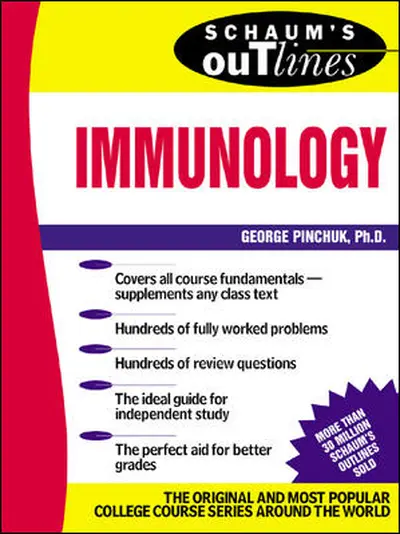My Account Details

ISBN10: 0071373667 | ISBN13: 9780071373661

Step 1 . Download Adobe Digital Editions to your PC or Mac desktop/laptop.
Step 2. Register and authorize your Adobe ID (optional). To access your eBook on multiple devices, first create an Adobe ID at account.adobe.com. Then, open Adobe Digital Editions, go to the Help menu, and select "Authorize Computer" to link your Adobe ID.
Step 3. Open Your eBook. Use Adobe Digital Editions to open the file. If the eBook doesn’t open, contact customer service for assistance.
Tough Test Questions? Missed Lectures? Not Enough Time? Fortunately for you, there's Schaum's Outlines. More than 40 million students have trusted Schaum's to help them succeed in the classroom and on exams. Schaum's is the key to faster learning and higher grades in every subject. Each Outline presents all the essential course information in an easy-to-follow, topic-by-topic format. You also get hundreds of examples, solved problems, and practice exercises to test your skills. This Schaum's Outline gives you Practice problems with full explanations that reinforce knowledge Coverage of the most up-to-date developments in your course field In-depth review of practices and applications Fully compatible with your classroom text, Schaum's highlights all the important facts you need to know. Use Schaum's to shorten your study time-and get your best test scores! Schaum's Outlines-Problem Solved.
Copyright Page
Dedication
Preface
Contents
Chapter 1 Overview of Immunity And The Immune System
Introduction
Discussion
General Features of Immune Responses
Clonal Selection Hypothesis
Chapter 2 Cells, Tissues, And Organs of The Immune System
Introduction
Discussion
Lymphocytes
Macrophages
Dendritic Cells
Other Nonlymphoid Cells That Participate in Immune Reactions
Lymphoid Tissues And Organs
Chapter 3 Antibodies And Antigens
Introduction
Discussion
An Overview of Antibody Structure
Antigen–Antibody Interaction
Antibody Heterogeneity And Hybridoma Technology
Laboratory Uses of Antibodies
Chapter 4 Maturation of B Lymphocytes And Expression of Immunoglobulin Genes
Introduction
Discussion
Generation of The Primary Antibody Repertoire
Antibody Gene Mutations And The Generation of Secondary Antibody Repertoire
Chapter 5 The Major Histocompatibility Complex
Introduction
Discussion
Chapter 6 Antigen Processing And Presentation
Introduction
Discussion
Chapter 7 T-Lymphocyte Antigen Recognition And Activation
Introduction
Discussion
Chapter 8 B-Lymphocyte Activation And Antibody Production
Introduction
Discussion
Chapter 9 Immunologic Tolerance
Introduction
Discussion
Chapter 10 Cytokines
Introduction
Discussion
A. Common Properties of Cytokines
B. Cytokines That Mediate And Regulate Innate Immunity
C. Cytokines That Mediate And Regulate Adaptive Immunity
D. Cytokines That Stimulate Hemopoiesis
Chapter 11 Innate Immunity
Introduction
Discussion
Chapter 12 Effector Mechanisms of Cell-Mediated Immunity
Introduction
Discussion
Chapter 13 Effector Mechanisms of Humoral Immunity
Introduction
Discussion
Chapter 14 Immunity to Microbes
Introduction
Discussion
Chapter 15 Transplantation Immunology
Introduction
Discussion
Chapter 16 Immunity to Tumors
Introduction
Discussion
Chapter 17 Autoimmunity And Autoimmune Diseases
Introduction
Discussion
Chapter 18 Immunodeficiencies
Introduction
Discussion
Index
Need support? We're here to help - Get real-world support and resources every step of the way.